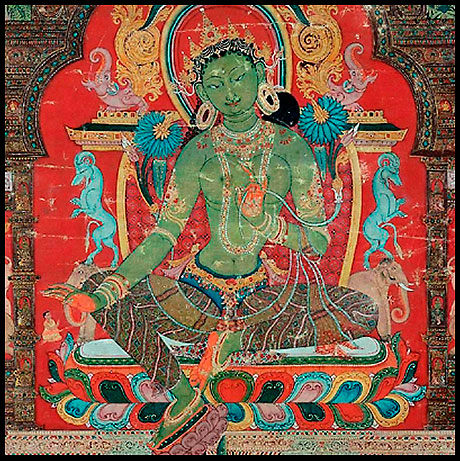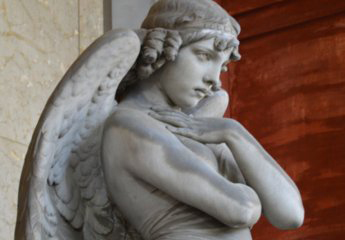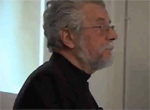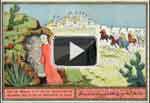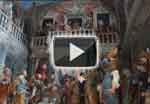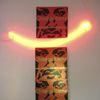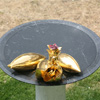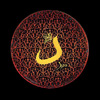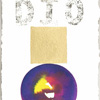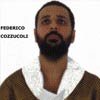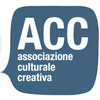Tarshito belongs to that breed of artists who, from the late sixties throughout the seventies and beyond, have experienced a new ability to cross cultures, religions, and "other" places capturing precious legacies of knowledge, thought, and techniques to be developed into profound formulations of modernity and even projected towards the future. It is an opening to a wide geography of culture, far from the linear historicism of Western art and directed towards recovering the craftsmanship and dexterity of creating that had been programmatically abandoned in both the art and design of those years: there, the research of Alighiero Boetti, Francesco Clemente, and Louis Alders converge, with different outcomes.
An architect and designer born in Puglia- the most eastern part of Italy, divided between Bari and Milan and other places where his beloved teaching activities in the Academies of Fine Arts have led him, a curious and attentive traveller, Tarshito is, more than a nomad or a novel Odysseus, a resident of the territories of the East. His great journey into the Eastern world has allowed him to learn a mindset that does not fall into the trap of our rational thought process. His India and his Nepal are not the ones reachable by any charter flight; they are not holiday destinations, but places of the spirit, imagination, and poetry. Here he transforms into the "warrior of love". This is where, since the end of the seventies, his ecstatic visions have originated.
But for Tarshito, an active and determined man of the West, the discovery is always subject to the execution of a project, which in turn derives from the jolt of the discovery: it goes from the instantaneousness of the illumination to the duration of a fulfilling practice that eventually brings about his extraordinary paintings, objects / symbols and ritual objects created in series entitled Vases, Warriors of Love, Sacred Animals, Trees, and Inhabitable Musical Instruments.
Tarshito is a kind of "organizational intelligence" who designs and then delegates the execution to others, mingling the material production of his art into a profusely collective project. It is this socializing, which allows the spirit and the message of work to be shared, that is a typical trait of Tarshito’s work. He is the director of a mechanism, which, like in cinema, involves know-how, editing, and going through the motions. Since the days of Speciale until now, Tarshito has had many happy collaborations with designers and artists such as Alessandro Mendini, Mario Merz, Nanda Vigo, Andrea Branzi, Richard Dalisi, Ugo Marano and Gianni Pettena.
Tarshito is ecumenical. His work extends to include discoveries and encounters, practicing sharing and listening, and pursuing harmony. In his work, he creates a new world, a new humanity.
Marina Pizzarelli
The genius of the Amphora.
Of receiving, the thought and art.
“If you don’t know who I am, it will be enough to know that I counted the days until your arrival.” (E. Jabès.) I didn’t know, in fact, anything about Tarshito. I found him in front of me, one beautiful day, and a few minutes later we found ourselves sharing many memories, hands digging around, sleeves rolled up, igniting the imagination with respective impossibilities, as yet unclaimed. Of these two, who had counted the days? Maybe, we will never know, or maybe, we don’t care much?
Within that long reminiscence, in which we found ourselves. I could tell you a lot, in fact. However I will tell you about that another time, hopefully, if you have enough time. In this postcard which I’m sending (With Tarshito) I would like simply to tell you where this memory began; how it blossomed, with how much precision the door then opened and the mind (and when something like this happens, one understands that the door and the mind, have one single identity; to live is to think, and vice versa, says the Philosopher.) I had chosen, as a theme, for the second year of the course at the Academy, this topic; “The guest and the disturber.” The idea came to me from the emphasis that the category of hospitality has taken, in the actual circumstances; and the crucial role of that very philosophy, aside from the political and social thought, they give the constellations some meanings associated with hospitality. The symptom of a certain necessity becomes vital, but certainly a problem which is becoming more disturbing. It seems also to be, the customary identity categories and differences between themselves and the alien, between relatives and strangers, are frozen upon themselves. The obsession with demarcation generates more confusion than that which it is trying to remedy. The category of hospitality, so extraordinarily fascinating, powerful and ambiguous, they have tried to give a name and precise practise to what essentially defies logic. Within them, in fact, without the enormous, infinite space of hospitality, where one looks for relationships with non-relatives, taking one outside the swallowing of everything within oneself, also like the expulsion of all things strange from the Other, in the end we find nothing. What, in life, is exclusively our own? And what, in humanity, do we judge to be totally foreign? The beauty of life and of humanity is in the porosity of these confines. Visceral, emotional experience, that which constantly challenges the confines between oneself and the Other. At least as much as appears a risk to make one shudder, is always a little disturbing. There is also another emotion which is important to us in life, what is this like? Does a necessary risk exist, how can this be?
The inner-sides of the amphora are indispensable to she shape of its dwelling and internal form. Yet it is the emptiness which renders it indispensable, the wonder of its sweet strength. It is enough to simply turn it over in order to understand, its shape remains intact. However, the precious part – the opening, the emptiness – once obstructed, make the shape impenetrable and hostile. Obtuse. Its potentiality to receive is at zero. Its identity remains the same but it is without purpose. Its difference transforms into pure and simple strangeness, a receiving space, transformed forever. Without the potentiality to receive which always remains quite empty ready to be shared, even the thought, which has the potentiality to be shared, dies.
Tarshito’s amphora doesn’t run this risk. Even when you don’t see them, they have roots which keep them alive and vital, archetypes of the living-receiver. Their womblike cavern remains open facing upward. At the same time, their roots keep them well rooted to the earth, which feeds their corolla, which makes them always seem bigger, more majestic, and ready to receive. They have impressions, on the surface of their bodies, the colours of the world and signs of their being living beings, happy to be reflected and remain impressed upon themselves, in the same way as a precious scroll of the essential elements of the cosmos. When they are nude their skin is soft with luminous essence, and resplendent with fine gold. They enflame the imagination with infinite body-amphora, in which the precious emptiness is guarded like a promise to receive. They can be dressed with the entire geography of the earth; and you, with your eyes and hands, can softly caress all the borders, discovering that none of them resist. They can vibrate with the sounds of origin; and you can experience it, as though, in that place, in the world and soul, the voice and consonance were invented. The soul of things, of the cosmos, of all living beings, are guarded in the receiving cavern and live within the penumbra which can never truly be revealed, unless through the availability of its welcome. When the bodies of man and woman, warriors of love and dance of the spirit, assume the shape of the amphora – the receiving place, which manages to find a meeting place even in opposites – they make the perfect image, fully disclosed.
A description of reality, which is not poetic, cannot be complete (J.D. Barrow). We did not assist with the creation of the world, nor of ourselves, says the great Hebrew philosopher Emmanuel Lèvinas. However, we ourselves, and the world, assist the creation every day, even when we really don’t think about it and we believe that we don’t really see anything. The artist adds nothing to this grandioso phenomenon: our perfect simultaneousness to the creation of the world, which we have driven back again – who knows why – in the dark nights of the times. Simply with something, I don’t know what, puts it in light, colour and music. In all that we need in order to reflect – like the immaterial emptiness of the amphora’s corolla, turned over again to face upward – reminds us of the receiving sky of the Divine One. To draw the necessary strength, on order to not inhabit the earth in vain.
Pierangelo Sequeri
Source: Catalogue Tarshito Le Culture Sacre dell'Arte
Interview with Tarshito
by Manuela De Leonardis
Rome 2006. The peaceful voice of Tarshito responds to the questions. He sometimes arouses enthusiasm, with his climbing tone, accompanied by the movement of his curly hair. His words have a stronger intensity when accompanied by this gesture. Born in Corato (Bari) in 1952 - his name is Nicola Strippoli - he studied architecture in Florence. After completing his degree, in 1979, he took a long trip to India which left him a changed man, an enlightened man. "Happiness is to bring to the surface internal feelings; it is an awakening of your energies; it is an awakening of your soul", said Bhagwan Shree Rajneesh, also known as, Osho (1931-1990), Tarshito’s spiritual teacher.
Designer, interior designer, architect, artist and since a few years ago, also teacher of Design at the Academy of Fine Art in Rome, Tarshito experiments with form and subject: vases, sculptures, jewellery, terracotta, gold, crystal, cloth, paper, wood… finding a perfect equilibrium between design and craftsmanship. "The meeting between the design philosophy of the west and the inspiring myths of the Indian craftsmanship has produced amazing results of great stylistic variety and matter, " - writes Pierre Restany - " witnesses of the free union between ritual symbolism and daily functional practice." The bond with India, where he continuous to return almost every year, is always very strong. One of the most important one-man shows by Tarshito - The gold and the Clay – was held at the Crafts Museum in New Delhi, in 2001. During 2006 other important shows have been: Jawahar Kala Kendra Museum in Jaipur in collaboration with Raju and Mukesh Swami and at the Nature Morte Gallery in New Delhi, Offering: Recent works by Tarshito in collaboration with Mukesh and Raju Swami, Puspa Rao, Dastkar, and others…
Should I call you Nicola or Tarshito?
Tarshito is the name given to me by my spiritual teacher. In Sanskrit it means "thirst of god". Osho told me to remember to be thirsty of my divine, to look for it, to meet it with intensity, in the same t way that I would if I had the need to drink in a desert. This happened in 1979, during a time when this particular teacher was growing in popularity. I met him by chance. The same trip to India was also by chance, I could have easily chosen to go to New York as to Istanbul but a friend with whom I had previously travelled had the trip to India and I followed her. However once I arrived there I became interested in the meaning of meditation. At that time, one travelled by land, in the famous Magic Bus, and in every city there were some references for travellers: they exchanged information. Whilst asking where he could go to meditate I was given various addresses, among which was that of Vrindavana where Krishna lived, where I then stayed for some days. I also went to Dharamsala where the Dalai Lama was, it wasn’t until I reached the ashram of Bhagwan Shree Rajneesh of Poona, that I found somewhere I liked a lot and where I stayed for a long time. In all, I remained in India for six months, exactly the first months after graduation, those preceding the life of the worker. In this way I passed from student to worker with a degree in architecture, but also with this wave of therapy on one side and spirituality on the other. Osho, in fact, used meditation to de-condition the individual and to prepare them for an opening that allowed them to better receive therapeutic work.
Had you already heard about Osho and his ashram?
This meeting of mine with Osho was by chance, I simply thought he was a pleasant man. There were also other coincidences. When I was student in Florence the teacher with whom I prepared my thesis, Gianni Pettena, a famous architect - the "anarchitect" of radical architecture - invited me one Sunday to go with him to see Nicoletta Machiavelli. In that era this versatile woman, actress and artist, a mixture of beauty, transgression and culture, descending amongst others from the family to which Niccolò Machiavelli belonged, was in my opinion a legend. I met her in Florence and I met again her in Poona. These and other coincidences were a true welcome for me. The frequentation, then, of the ashram and meditation exercises, gave me a mental opening. I felt my divine part of life, a very bright part, which beforehand I knew very little about. I have recognized it and experimented. Since then, so many years have passed, I am within this type of air, of light. To return to your first question, therefore, call me purely Tarshito, without naturally removing anything from Nicola, which amongst other things means victory. With me it just so happens that I have the exact awareness if my name with the second name. It has been similar to a rebirth.
On returning from this first long trip to India, what is the reality you found in Italy, and particularly in Puglia?
It was very stimulating, because the teaching had been such to look at for beauty everywhere in the world, feeling it inside us. This way, in this era, starting to work especially in design, I tried to understand the essence of those objects I chose to draw. It was the beginning of the eighties, it was a great success. I worked with Shama (Cinzia Tandoi), the woman with whom I shared that intense period, who like me tried to discover the soul of the objects, or else, through the objects themselves tried to give a freshness back to the ritual. During this time there was a great revolution in design. There was the famous group, Alchemy, already formed at the end of the seventies by Sandro and Adriana Guerriero, extraordinary people of great intellect who put together all the greatest thinkers of the moment, among which were the Neapolitan Riccardo Dalisi, the Florentine Andrea Branzi. There was, then, another group, Memphis, with Ettore Sottsass, and there was me, in Bari, together with Shama, with the group, Special, in which we involved artists and designer such as Andrea and Nicoletta Branzi, Mario Merz, Alessandro Mendini, Meret Oppenheim, Ugo Marano, Nanda Vigo, Gianni Pettena, and Mimmo Paladino… We started a different type of revolution, more concerning content than aesthetics, of searching for the soul of the object. Those years, therefore, were extremely strong for me. Coming from India which had given me that great chance to put meditation and spirituality together with design. It also gave me a certain level of notoriety. All of this is thanks to those first six months in India.
After that first trip did you decide to return to India?
I have been back many, many times, at least fifty, because I went to see Osho, before he moved to the United States. The last time was five or six years ago, when he had already died. I hadn’t been for a while, because in the meantime I had gotten married and my daughters had been born, but I didn't like the ashram. The organization had changed, that time indeed I quarreled with India! During that trip, however, I had an appointment in Bombay, at the Taj Mahal Hotel, with Daniela Bezzi, an Italian journalist who lived in Delhi. Daniela by chance been to my studio in Milan and fallen in love with the atmosphere I had created there, so much so that she wished to meet me. Whilst I was due to be leaving India, after having quarrelled, India pulled me back toward that Italian journalist who then in 2001 organized various events, amongst which was a very important show - The gold and the Clay - at the Crafts Museum in New Delhi, whose manager Jyotindra Jain was incredibly enthusiastic about my way of working with artisans.
Both in Italy and in India, in fact, you use collaborators who give form to your ideas. When you sign the pieces of work you always use the English term ‘with’, which means together. Tarshito with Puspa or with Kamlesh and Umesh Ratna, with Tonino Usai or with Aldo and Lory…
Using the word ‘with’ I want to express the act of sharing. To feel the juice of the life. Also when I made furniture I always declared with whom I did them. They are life experiences done together. I like to relate the story of a table, for instance, that it has to entertain commemorative moments of life, for which the legs don't end the floor, but there are even leg-roots that continue over the floor to exalt the divine one. I shall explain the route this takes, this means that the carpenter has to caress the piece of wood in order to make it a table. He doesn't do this only by the use of his tools, he almost has to apologize to the wood, that was once a tree, by this transformation and he also gives new life to what was once a tree which will now be called a table and will participate in the life of a person, of a family, becoming a friend. The carpenter, therefore, has to be the medium to give the possibility of a new life to what was once a tree and has experienced death. I like to share this concept with the carpenter, because if I succeed in giving him some added inspiration, his hands will have a greater awareness of how to caress the wood. This is marvellous both for the carpenter and for me the inventor, for the object itself and for the person who will own the object. This is how I work, because this is how I can return the love that I wish to give, firstly to myself and to the people who have that type of gift.
How do you happen to meet these artists and from thing you understand that you/he/she can be born a feeling? Your visit tickets, are signed for instance by Tarshito with Puspa,…
At the moment I am painting with hands alone, pots, vases, because the vase retains the memory of my hands. They are empty vases that one can fill to receive beauty, light. You, me, people, we are all clean, empty vases, surrendered and silent, open to receive. At times I share this painting of mine which is also a thought, such a simple concept, with artisans, artists from various places such as Puspa, my little sister, a young artist I met in Orissa, in Puri, sweet as Indian women know how to be yet at the same time determined. I went to this region as I was curious about this area which was so different from the rest of India, very colourful. I was about to end a fantastic tour of the tribes and I asked a friend of mine to introduce me to artists expert in the local traditions. The first person I was introduced to was an old painter of a very specific tradition of Orissa, called Pata Chitra. He was very good, but he was not an empty vase, he spoke a lot about himself, yet there was no dialogue between us. Then a very young boy was brought to me, but he was also very frightened. He finally introduced me to a young Indian woman called Puspa. I liked her work, but also the situation in which we met. She entertained us in a simple house, but full of dignity, in which she lived with her father, her mother and her brothers. It was in the small entryway of the house, which is also a type of studio and also where she teaches painting to her students. I spoke to her about the Warrior of love, who has a flower as its weapon, and I felt her attention. Then when I said "… the flower which we all have… " I noticed a vibration, but I stayed there, I did ask her however if I could return the next day to show her some of my work. I felt that she was the right person. She liked my work and we decided to work together. It was a happy moment. I had my small work table, she instead worked on the ground, we have even eaten together on the ground. Authentic, sincere moments. The exchange is, as in this case, between my ideas and tradition. I don't twist the tradition, I simply make small changes to the tradition. I very much like to widen the field of energies, because one nourishes the other. During this last trip, I have managed to widen even further my relationship with other people. I have painted circles - the circle is harmony - and vases and I went on the search for Holy Men, the Saints, the Wise men, asking them for the word. Showing, that is, my paintings to have a piece of writing from them, or a word, so that people can see the gesture and read something extraordinary that fills the heart and the intellect. The meetings with these sacred men happened in temples or in the ashrams. At times they were incredibly beautiful meetings, with very kind men, at other times instead I didn’t feel as though I wanted to continue the work.
In fact in much of your work we see the writings of spiritual teachers such as Osho, Omraam Mikhael Aivanhov…
This is a rather recent piece of work. I went to find people who wrote certain phrases with their own hands. You, instead, are referring to other pieces of work in which I have used sentences from Aivanhov, Osho, Don Tonino Bello, a priest from Puglia who died some years ago, a Catholic - warrior, and others still. People like them give me immense joy, because they have very direct contact with the divine, which through them me I can quench my own thirst.
Let’s talk, instead, about your experience as a teacher of Design at the Academy of Fine Art…
It is a wonderful experience because I can experiment with so many other people, on average at least sixty per year, this is a way of planning without effort, with the preparation being oneself, to the opening of oneself through meditation. I can share the planning as a magical moment.
Do you find answers within your interlocutors?
Absolutely, yes. The young people are extraordinary because they feel my joy and the authenticity in what I do, from which a great trust is born. I feel that these young people come to learn to be an artist. The artist has a gift which is to materialize a piece of work. However the work must come from an idea. What we look for, is the magic, the special moment in which an idea appears. I teach this, to have an awareness of being from the stars. About how living beings are precious because we have life, so I teach them to celebrate life. I teach them how to look at themselves in the eyes, how to touch their own hands, how to greet themselves, how to open themselves up and, through this, how to allow the creative moment to enter. It is very important for me because it is how I find myself, because if I am really complete at that particular time my word will not only reach the intelligence, but also the heart of the students. I feel this at the precise moment in which I speak, because it cannot be mechanical, untrue, unreal, incomplete. Otherwise I would find only boredom and the students would not bother to come to lessons anymore. Everything departs from a point of intensity within myself, in which I have to be full of joy, of light, and of love.
Do you always succeed in being full of joy, light and love with your students?
It is not really a question of succeeding or not. Above all, at the beginning it was not easy, if I felt down, what did I have to do to be complete and bright? Then I discovered that if I was having difficulty I simply had to communicate it, I had to ask the students to help. I had to tell them that I could not be complete at that time, that I was able however to feel their help, even by everyone closing their eyes together, by holding hands and feeling the strong energy. Truth changes the complete energy. The problem is the power to be the teacher, to be in peak form during every moment of every situation. In truth, it is not like this.
Moving on to the painting you have recently completed, departing from design and from architecture. I find that there is a certain stylistic difference among the objects of design, eclectic and some redundant at times and these essential pictorial pieces of work…
It is a passage along various paths, a curiosity in life, is to experiment with different things. It see it simply in this way, I don't know how to give an intellectual explanation. For me it is difficult to see if my objects are redundant or not, because in the end they all belong to me. Someone else has also said that I am Baroque. I don't feel the redundancy, rather the generosity. The generosity of a tree or a plant with its flowers. Also the pictures, they are not at all simple. There is the gesture done whilst in meditation. It is a sort of breath. I do it during the expiration, thinking about wonderful things, connecting with the universe. Then there is the writing. These paintings, are in short also, full of things. The image I have of myself is that of a curious person who is now crossing this type of technique much joy, but also at times with a little exaggeration.
Do you not feel the need to have a style that identifies your work?
Certainly the pieces of work that I have done in Tunisia with artisans and artists from there are very different from my other pieces of work. What unites them is this pathway that I feel, the construction of my circle, and of my harmony. There is one consistency throughout all my pieces of work, painting, sculpture, design, architecture, teaching, so to speak which is also an art form, and anything else I choose to do, is my method of preparation. I waited for you to arrive I the same way I do with my students or the artist with whom I am working or a client… I like to arrive early, to wait and to prepare myself, to leave all things physical to kind of wash myself… a sign of water, of purification. I imagine, in fact, that this water can clean inside of me. This is my style, the opening and the preparation of the meeting. Then there is the fact to allow an idea to enter my thoughts, from that moment, if I am in Tunisia, Bari, India, or here with you in Rome - like now - it doesn't change a lot. My Tunisian pieces of work are very different from my Indian pieces, and perhaps different again from my Italian pieces, however the idea which unites them is to create the piece devoted to the divine one. In fact ideas arrive from the divine one, it crosses me, I create it, and then they laugh, because this ritual unites all things, it is an attempt of a circle. I very much like the fact that my work done in Japan is very different from what was done in Tunisia, I like to be able to cross these gifts that people have. The miniatures, the Patas Chitra are very different from the Tunisian carpets. I like to be eclectic in this sense. In the end my concepts that I work with a very few, only two or three. A person who is very attentive to the pieces can see this.
Are there also western cultural components in your work?
On one side there is the religion, I talked previously about Don Tonino Bello, his exceptional phrases from a deep level of Christianity, on the other side there is the dance. The group from the Living Theatre by Julian Beck and Judith Malina has been very important for me. They have done some extraordinary shows outside of Italy, in which the public took them by the hand… The truth, however, is that the truth of being intellectual is never neither oriental, nor western, it is a completeness and spirituality. I often travel to the East but my intention, in the end, also comes from the West.
How do you succeed in combining the aspects of artist, architect, traveller, teacher… with family affections?
Through my family, my marriage to Emma and our daughters Giulia and Maria Teresa, I have discovered the meaning of love and of being truly a creative being. The greatest creative gesture, which is at the same time magical, for me has been to have children. This is the true gesture of love, everything else is merely a resemblance. Beforehand, I thought I had known love, but only this is true love.
Source: Tarshito Warriors of Love
Other articles published on ASC about Tarshito:
“Divine Allure, il profumo del divino' di TARSHITO http://www.artesacracontemporanea.it/blog/portale.php?act=archivio&id=2384&categ=&lingua=0&categ=0
Lettera Aperta... di Tarshito http://www.artesacracontemporanea.it/blog/portale.php?act=archivio&id=2199&categ=&lingua=0&categ=5
Tarshito - Meraviglioso creato http://www.artesacracontemporanea.it/blog/portale.php?act=archivio&id=2101&categ=&lingua=0&categ=0
Printemps des Poètes sul tema d’infinis paysages http://www.artesacracontemporanea.it/blog/portale.php?act=archivio&id=1944&categ=&lingua=0&categ=1
Incontro - dialogo con l’Artista Tarshito http://www.artesacracontemporanea.it/blog/portale.php?act=archivio&id=1473&categ=&lingua=0&categ=5
CURRENT AND NEXT EXHIBITION
TARSHITO SALENTO SPECIAL
Paintings, sculptures, installations and happenings
The works of Apulian artist Tarshito amidst Spirituality, Creativity and Tradition in 4 exhibitions, with different themes for the 4 different host Municipalities: Poggiardo, Castro, Maglie, and Nociglia, from July to September 2013, all in the beautiful land of Salento, in Apulia, Italy. Each exhibition will have the active involvement of the public who can participate in a happening in each host town.
Professor Marina Pizzarelli, curator
Coordinated and organized by the “Salento Agorà" cultural association.
1- Title: VASES – LISTENING
Municipality of Poggiardo - Palazzo della Cultura
Inauguration Saturday July 13th / August 2nd 2013
The shape and the symbol of the vase recall receptivity, listening.
A large vase covered in ceramic hands, about 3 meters high, will welcome visitors in the historical building’s atrium. Hands in festivity, hands in celebration. After which, there is a large room that will show more vases, ceramic sculptures and paintings in theme.
The person who practices deep listening practices peace: he opens the door and allows understanding, peace and reconciliation to enter into our hearts, into our families, into the society in which we live..." Thich Nhat Hanh
2- Title: TREES – CREATURES
Municipality of Castro – Vescovado Halls and Aragonese Castle
Inauguration Saturday August 3rd / August 23rd 2013
The tree is a symbol of the union between Matter and Spirit, a living creature.
The bark is the embrace of the tree and natural rubber- sap of the tree itself. The natural bark forms a large vase in the centre of the room.
A tree of rubber bark, made from casts of natural bark, the fruits of which are vases and bells.
A ladder of rubber bark leaning against the tree to recall the tradition of working in the fields. Installations of large paintings with bark and natural rubber.
“We love to give and receive flowers, put them in our homes, plant them in our gardens, go to admire them in parks or in the country; we marvel at their forms, at their colours, at their scents. First of all, however, they are considered elements of decoration, which contribute to making our existence more pleasant; here as well, then, everything remains on a superficial level and one does not receive much from their presence. In reality, flowers are living beings with which one can enter into a relationship. Yes, a flower is not only a colourful and fragrant particle of matter, it is the dwelling of an entity that comes to speak to us of the earth and of the sky. If one knows how to look at it, how to connect oneself to it, one can enter into a relationship with the forces of nature, with the entities that work to make that flower such an invigorating and poetic presence.”
Omraam Mikhaël Aïvanhov
3- Title: SACRED ANIMALS - RESPECT
Municipality of Maglie - “Francesca Capece” Foundation Gallery
Inauguration Saturday August 23rd / September 13th 2013
Value, respect and love for animals.
Animals painted on handmade paper with the body which brings unity, a tiger carved in wood that comes from a large root whose body shows new continents that do not have lines that divide. Sacred Animals that bring a new world united and mixed, without borders. Turtles and elephants whose legs become columns for lay temples.
“The greatness of a nation and its moral progress can be judged by the way its animals are treated.” Gandhi
4- Title: WARRIORS OF LOVE – QUALITIES
Municipality of Nociglia – Palazzo Baronale
Inauguration Saturday September 14th / September 29th 2013
Each person living with the awareness of his or her own qualities is a weapon of love.
Paintings and digital art to represent, through body art, transformations in each of us. Hands turn into flowers so that touch can be fragrant like a flower. A large installation, like a beautiful Sunderban forest, of warriors that punctuate the space with the sound of a gong.
“Receiving and turning into flowers the violent words and actions that are thrown at us. The power of understanding and compassion gives us the ability to do it. We all have the ability to turn arrows into flowers.” Thich Nhat Hanh
More info:
Salento Agora: info@salentoagora.it
Speciale Tarshito: info@tarshito.com
EDICOLARARA Progetto Insight
8 June – 18 July 2013
Tarshito – “The Bliss”
curated by Maria Vinella
coordinating by Paolo De Santoli
Terlizzi (BA), Via de Cristoforis
Italy
Artist, architect and designer Tarshito experiments with plural shapes / figures to create sculptures, paintings, objects and installations dedicated to the concept of art as communication between the mind and the spiritual, thought and project, design and meditation. With natural materials such as crystals and stones, metals and wood, ceramics and textiles, paint pigments and paper, Tarshito creates works that engage the viewer not only through cognitive interpretation but also through sensorial emotion.
Sounds, smells, colours, materials, and plant and mineral elements make the works highly suggestive which, in the fusion of image and word, put into action a philosophy of art as a therapeutic treatment for the Self. For years, Tarshito's research has been linked to the great need of both men and women for creativity and spirituality in the contemporary world.
In his works, we find the desire to harmonize living energies with the forces of the universe, natural practices and thought processes, intellectual potentialities and sensorial abilities. Tarshito’s artistic operations - frequently made __in an intercultural framework in cooperation with artist-craftsmen from around the world - are evocative of magical symbologies of ancient traditions and cultures, intended to meet our gaze and our minds.
For Tarshito, art is first and foremost a catalyst of energy, a collective, creative expansion and an ethical-aesthetic operation in sharing, able to raise awareness and bring forth reflection, commitment and responsibility.
The "Bliss" operation is a creative intervention of choral meditation. It is based on the collaboration between the artist and the visitors, who will be given a ticket containing a sacred word or phrase and a small candle. Inside the installation space, in a magical and sacred atmosphere, the artist will use phrases and words, candlelight, and the sounds of singing bowls or gongs to carry out the ritual of the birth of "Bliss".
OSHO RAJNEESH, "THE ORANGE BOOK"
“SO YOU HAVE TO LOOK AT THE FLAME UNTIL TEARS START FLOWING FROM THE EYES.
THE TECHNIQUE OF GAZING IS NOT CONCERNED REALLY WITH THE OBJECT, IT IS CONCERNED WITH GAZING ITSELF. BECAUSE WHEN YOU STARE WITHOUT BLINKING YOUR EYES, YOU BECOME FOCUSED, THE NATURE OF THE MIND IS TO MOVE FROM ONE OBJECT TO ANOTHER, TO MOVE CONSTANTLY. IF YOU ARE GAZING AT DARKNESS OR AT LIGHT OR AT SOMETHING ELSE, IF YOU ARE REALLY GAZING, THE MOVEMENT OF THE MIND STOPS.
THE QUESTION IS TO STOP THE MIND COMPLETELY IN YOUR GAZE, TO FOCUS IT, SO THE INNER MOVEMENT, THE FIDGETING, STOPS; THE INNER WAVERING STOPS. YOU ARE SIMPLY LOOKING, NOT DOING ANYTHING. THAT DEEP LOOKING WILL CHANGE YOU COMPLETELY. IT WILL BECOME A MEDITATION.”
Biography
Born in 1952, August 13th, in Corato (a small city on the outskirts of Bari, Puglia region, southern Italy), Tarshito gained his university degree in 1979 at the Faculty of Architecture in Florence. The subject of his dissertation was ‘The Street Theatre’ and his tutor was Gianni Pettena, a renowned interpreter within the movement called Radical Architecture in Italy. With his university degree, Tarshito embarked on his first journey to India: a ‘very long and fortifying experience’ (in his own words) that was for him like a sort of rebirth.
At the beginning of the 1980s, together with the artist and designer Shama - his partner at that time – he founded the art space Speciale Gallery in Bari: an experience that lasted until 1987, involving designers and artists of a certain fame (Alessandro Mendini, Mario Merz, Nanda Vigo), and others still unknown, all linked by a desire to design, promote and produce events and objects with a certain degree of ‘new rituality’. The beautiful series of Carpets and Wallhangings for Meditation are exemplary of that period and experience.
In 1990 the Speciale Gallery Experience was brought to international attention with a large exhibition at the Groninger Museum in Holland. Curated by the Museum Director Frans Hacks, this exhibition marked the closing event of a trilogy of exhibitions devoted to Italian design of the 80s. It should be noted that the other two chapters within the realm of Italian design celebrated within that same trilogy were the Memphis Movement (launched by Ettore Sottsass) and the Alchimia Design Factory alias Alessandro Mendini.
During the following decade Tarshito participated in several solo and collective art shows that resulted in the conceptualisation of the Warrior of Love, a sort of iconic representation of his idea of engagement as an act of creation: a human body whose flowering appearance derives from a transcendent inner beauty, and whose flower/weapon will be used only for good, generous causes.
It was, however, with his major solo show, The Gold and the Clay, curated by Daniela Bezzi and by Jyotindra Jain at the Crafts Museum of New Delhi in 2001, that Tarshito’s artistic path expanded and, at the same time, became more focused, through the wonderful experience of collaboration with the myriads crafts of India. From terracotta to metal, from the tribal traditions of Warli, Mithila, Jharkhand to the embroidery of Gujarath or Rajasthan, from the delicate miniatures of Bikaner to the colourful devotional Pattachitra of Orissa, Tarshito’s thirst for new ‘encounters in creation’ becomes endless, while the desire of experimenting with his own action-painting becomes stronger than ever and gives birth to an impressive series of multiple creative dialogues.
The series of Vases resulting from that period of intense creative travelling in India is magnificent: vases that are sometime huge, big or even tiny, on paper, on fabric or in the shape of enormous sculptures, and that are the most eloquent manifesto of his poetry.
Tarshito’s Idea of art finds its expression through an attitude of embracing and at the same time filling up, vis a vis the contribution of his counterpart – until the subesequent creative overflowing. A process of continuous transfer, conceptual and emotional, that results from the relation with the form/material of a craftperson, or via a special session of meditation, or designing works that could be considered monuments to a completely new (and indeed so ancient) type of sacred art, perhaps of the purest kind: an art that cast the artist as a humble channel of transmission, and where the creative process – as a gift in its own right – can be experienced only through a situation of conceptual sharing (and collective authorship) with other people.
Ultimately there remains Tarshito’s work, distinguished by the playfulness that constantly permeates his art work, throughout the process.
SELECTION/SOLO EXHIBITIONS
2012
“Shanti Dam- La Casa della Pace sarà abitata da guerrieri d’amore”, Sukiya, Lamezia Terme
progetto“DIVINE ALLURE Il profumo del divino– Opere di Tarshito 2012” a cura di Maurizio Corrado, (Catalogo)
“Il Mondo di Tarshito”, a cura di Attilio Zamarchi, Museo Brunori, Bertinoro (FC)
“Il Mantra Visibile”, a cura di Raimonda Z. Bongiovanni, Bongiovanni Gallerie, Bologna
“Guerrieri d'amore”, a cura di Olivia Toscani Rucellai e Mauro Lovi, Galleria OTTO luogo dell’arte, Firenze
2011
“The Circle of Making I - An Italian artist, Tarshito, in creative dialogue with India”, curata da Laila Tyabji, evento promosso dal Padiglione Italia nel mondo, Biennale di Venezia 2011, Istituto Italiano di Cultura, Delhi (India), (Catalogo)
“The Circle of Making II - An Italian artist, Tarshito, in creative dialogue with India”, curata da Amal Allana, evento promosso dal Padiglione Italia nel mondo, Biennale di Venezia 2011, Art Heritage Gallery e Shridharani Gallery, Delhi (India), (Catalogo)
“Meraviglioso Creato" a cura di Gianni Pettena, Sala Murat e Fortino S. Antonio Abate, Bari
2010
“Tarshito Ora”, a cura di Gigliola Fania, spazio Arteora, Foggia, (Catalogo)
2009
“Tarshito-Arte per la Nuova Umanità-Sztuka dla Nowej Ludzkosci ", Museo Nazionale di Stettino, Stettino (Polonia)
“Il vaso e la croce”, a cura di Andrea B. Del Guercio, Scuola Grande di San Giovanni Evangelista, Venezia
“The Vase and The Warriors of Love", Taj Bengal, Kolkata-India
“The Vase and The Lines", Bose Pacia Gallery, Kolkata-India
“Jugalbandhi Encounters in Creation", a cura di Daniela Bezzi, The Nehru Centre, Londra
“Le Culture Sacre dell’Arte" a cura di Andrea B. Del Guercio, Facoltà Teologica dell’Italia Settentrionale, Chiostri di San Simpliciano, Milano, (Catalogo)
2008
“Le Culture Sacre dell’Arte", a cura di Andrea B. Del Guercio, Castello di Trani, Trani (Ba), (Catalogo)
“Artemare 2008_incontri di arte e cultura tra i due mari ", Museo Diocesano di Otranto, Otranto (Le) e Museo Diocesano di Gallipoli,Gallipoli (Le)
“Le Culture Sacre dell’Arte", a cura di Andrea B. Del Guercio, Ex-Chiesa di San Francesco, Como, (Catalogo)
2007
“Il mondo dei Guerrieri d’Amore", Artemisia Art Gallery, Monaco-Montecarlo
“Opere di Pace”, a cura di Maria Vinella, Galleria Provinciale di Arte Contemporanea-Palazzo Dogana, Foggia e Museo Archeologico Nazionale-Castello Svevo di Manfredonia, (Catalogo)
“Territori di contemplazione",Spazio Tashi Delek, Milano (Catalogo)
“Guerrieri d’Amore", a cura di Manuela De Leonardis, Galleria Sala 1, Roma (Catalogo)
2006
“Ferveur", a cura di Mohammed Messaoudi,Galleria Makhzen, Tunisi, (Tunisia)
“Abbracciando il mondo",a cura di Maria Paola Porcelli, Ex-Carcere, Corato, Bari , (Catalogo)
"Offering", a cura di Peter Nagy, Gallery Nature Morte, New Delhi, India
"Carezze with pennelli,gesti,occhi,respiro,parole", a cura di Maria Paola Porcelli, Sala Murat, Bari, (Catalogo)
"Sundervan", Artist’s Centre, Mumbay, India
“The Vase and Fish”, a cura di Peter Nagy, Jawahar Kala Khendra Museum, Jaipur, India
2005
"Celebration", a cura di Vito Intini, Biblioteca Comunale, Putignano (Ba), (Catalogo)
2002
"No Borders no Wars", Lokayata Art Gallery- Hauts Khas Village, New Delhi - India
2001
"Warriors of Love”, Morarka Centre for Crafts of the National Centre for the Performing Arts - Mumbai - India
"The Gold and the Clay", a cura di Daniela Bezzi e Jyotindra Jain, The Crafts Museum, Delhi – India, (Catalogo)
2000
"Blessing", Galleria Roberta Lietti Arte Contemporanea, Como
1998
"L'aura di Federico-Evocazione 07-02-1998", Cappella del Castello di Lagopesole, Potenza
1997
"Omaggio a Tarshito", a cura di Ester Milano, Expolevante, Fiera del Levante, Bari, (Catalogo)
1993
"Spiral Tree", Il Sentiero, Bari
1992
"Pietre di luce luci di candela", Galleria Omphalos, Terlizzi (BA)
1991
"Guerra d'amore", Oxido, Milano
"Catalizzatori del sacro", a cura di Roberta Lietti, Roberta Lietti Arte Contemporanea, Como
1990
"Una sola terra una sola umanità", a cura di Domenico D’Oria, Associazione culturale italo/francese, Bari
"Il mondo Speciale", a cura di Frans Hacks, Groninger Museum, Groningen, (Catalogo)
1989
"Incontri di musica sacra contemporanea", Cattedrale di Bari, Bari, (Catalogo)
"Architetture sonore", a cura di Domenico D’Oria, Istituto culturale italo/francese, Bari
1986
"Riti lontani della casa", a cura di Pierre Restany,Museo Alchimia, Milano, (Catalogo)
“Shama e Tarshito", Galerie Objecte, Munchen, (Catalogo)
1983
"Passare di notte velocemente", Studio Soligo, Roma
Imagine: Vaso by Tarshito 2007 inchiostro di china su carta fatta a mano cm. 95 x 60. Artwork kindly donated by the artist to ACC Associazione Culturale Creativa for the fund raising project to support the activity of ASC Contemporary Sacred Art with the lottery "Donate, Play, Collect Art" done on spring 2013.


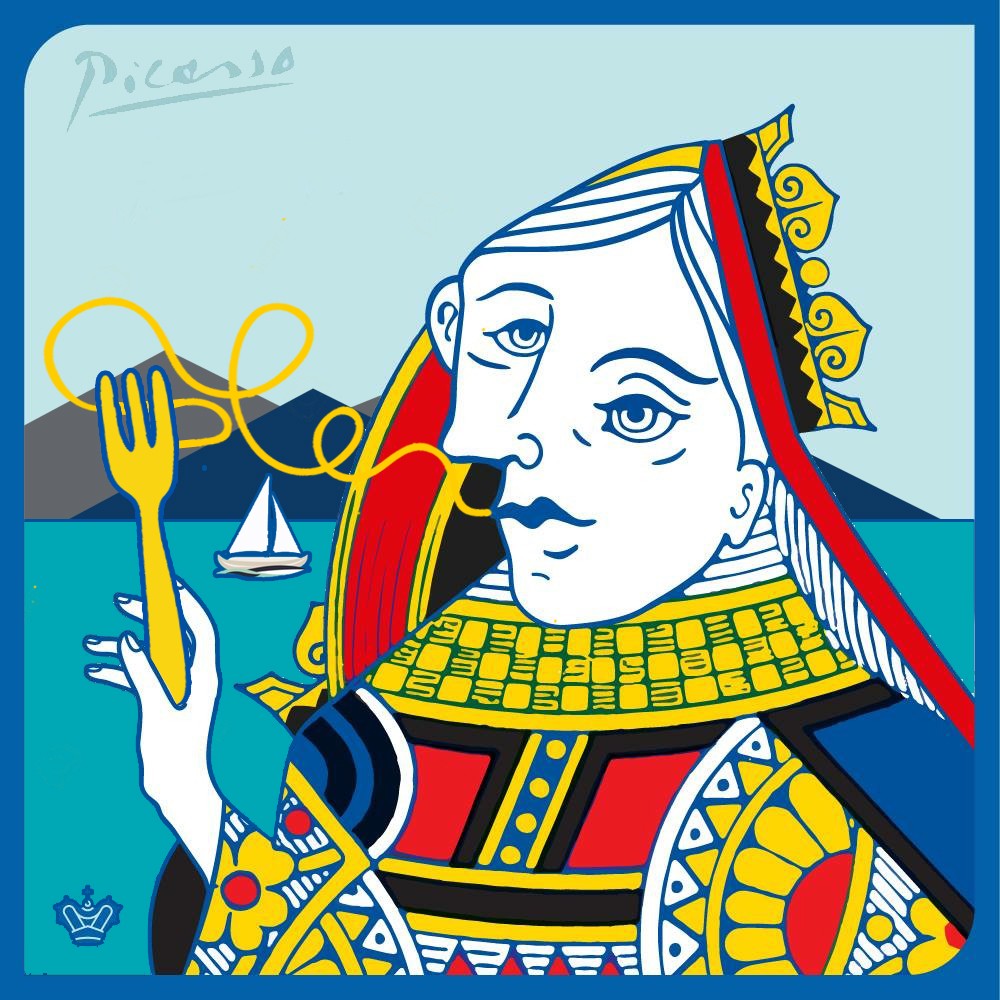


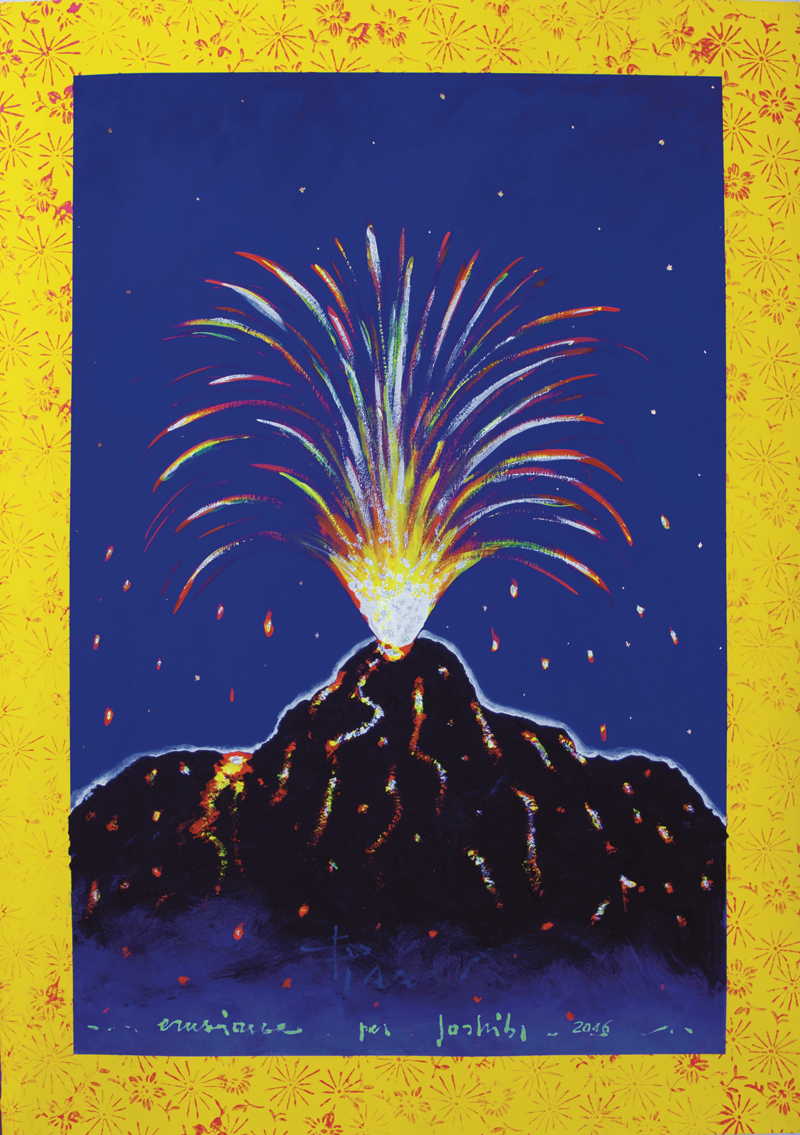


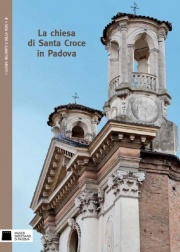






 download allegato ]
download allegato ] 







